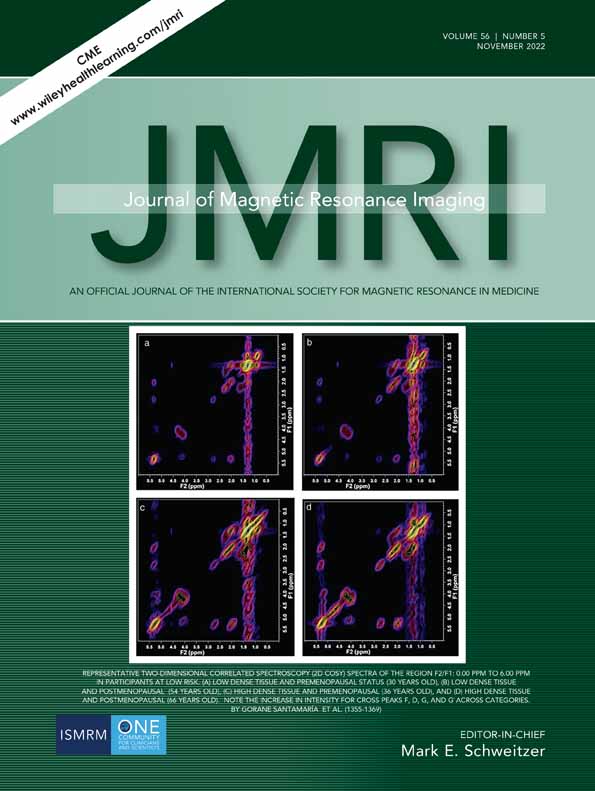Time-Resolved Noncontrast Magnetic Resonance Perfusion Imaging of Paraspinal Muscles
Abstract
Background
While evaluation of blood perfusion in lumbar paraspinal muscles is of interest in low back pain, it has not been performed using noncontrast magnetic resonance (MR) techniques.
Purpose
To introduce a novel application of a time-resolved, noncontrast MR perfusion technique for paraspinal muscles and demonstrate effect of exercise on perfusion parameters.
Study Type
Longitudinal.
Subjects
Six healthy subjects (27–48 years old, two females) and two subjects with acute low back pain (46 and 65 years old females, one with diabetes/obesity).
Field Strength/Sequence
3-T, MR perfusion sequence.
Assessment
Lumbar spines of healthy subjects were imaged axially at L3 level with a tag-on and tag-off alternating inversion recovery arterial spin labeling technique that suppresses background signal and acquires signal increase ratio (SIR) from the in-flow blood at varying inversion times (TI) from 0.12 seconds to 3.5 seconds. SIR vs. TI data were fit to determine the perfusion metrics of peak height (PH), time to peak (TTP), mean transit time, apparent muscle blood volume (MBV), and apparent muscle blood flow (MBF) in iliocostal, longissimus, and multifidus. Imaging was repeated immediately after healthy subjects performed a 20-minute walk, to determine the effect of exercise.
Statistical Tests
Repeated measures analysis of variance.
Results
SIR vs. TI data showed well-defined leading and trailing edges, with sharply increasing SIR to TI of approximately 500 msec subsiding quickly to near zero around TI of 1500 msec. After exercise, the mean SIR at every TI increased markedly, resulting in significantly higher PH, MBV, and MBF (each P < 0.001 and F > 28.9), and a lower TTP (P < 0.05, F = 4.5), regardless of the muscle. MBF increased 2- to 2.5-fold after exercise, similar to the expected increase in cardiac output, given the intensity of the exercise.
Data Conclusions
Feasibility of an MR perfusion technique for muscle perfusion imaging was demonstrated, successfully detecting significantly increased perfusion after exercise.
Level of Evidence
1
Technical Efficacy Stage
1
Conflict of Interest
Dr. Bae has a research funding from General Electric Healthcare and Dr. Miyazaki has a research funding from Canon Medical Systems. The remaining coauthors have no conflicts of interest.




